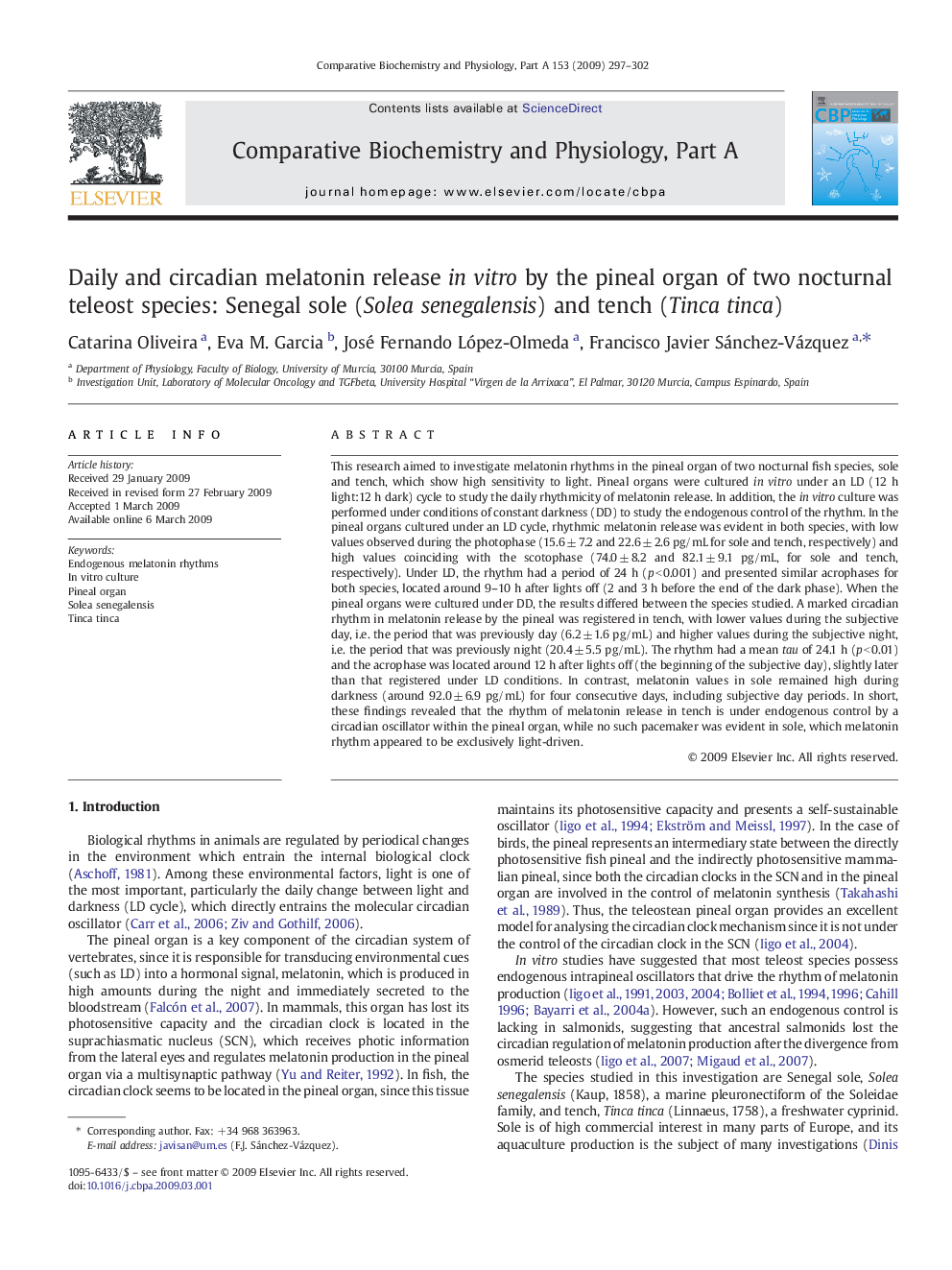| Article ID | Journal | Published Year | Pages | File Type |
|---|---|---|---|---|
| 1974588 | Comparative Biochemistry and Physiology Part A: Molecular & Integrative Physiology | 2009 | 6 Pages |
This research aimed to investigate melatonin rhythms in the pineal organ of two nocturnal fish species, sole and tench, which show high sensitivity to light. Pineal organs were cultured in vitro under an LD (12 h light:12 h dark) cycle to study the daily rhythmicity of melatonin release. In addition, the in vitro culture was performed under conditions of constant darkness (DD) to study the endogenous control of the rhythm. In the pineal organs cultured under an LD cycle, rhythmic melatonin release was evident in both species, with low values observed during the photophase (15.6 ± 7.2 and 22.6 ± 2.6 pg/mL for sole and tench, respectively) and high values coinciding with the scotophase (74.0 ± 8.2 and 82.1 ± 9.1 pg/mL, for sole and tench, respectively). Under LD, the rhythm had a period of 24 h (p < 0.001) and presented similar acrophases for both species, located around 9–10 h after lights off (2 and 3 h before the end of the dark phase). When the pineal organs were cultured under DD, the results differed between the species studied. A marked circadian rhythm in melatonin release by the pineal was registered in tench, with lower values during the subjective day, i.e. the period that was previously day (6.2 ± 1.6 pg/mL) and higher values during the subjective night, i.e. the period that was previously night (20.4 ± 5.5 pg/mL). The rhythm had a mean tau of 24.1 h (p < 0.01) and the acrophase was located around 12 h after lights off (the beginning of the subjective day), slightly later than that registered under LD conditions. In contrast, melatonin values in sole remained high during darkness (around 92.0 ± 6.9 pg/mL) for four consecutive days, including subjective day periods. In short, these findings revealed that the rhythm of melatonin release in tench is under endogenous control by a circadian oscillator within the pineal organ, while no such pacemaker was evident in sole, which melatonin rhythm appeared to be exclusively light-driven.
